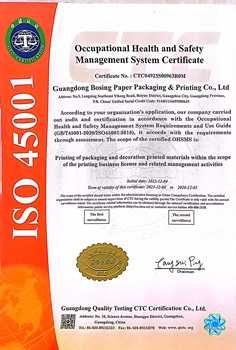In an era where environmental consciousness is no longer optional but essential, biodegradable food packaging boxes emerge as the unsung heroes of sustainable living. These innovative containers represent more than just a trend—they signify a fundamental shift in how we approach food consumption and waste management. As plastic pollution continues to threaten our ecosystems, biodegradable packaging offers a promising solution that aligns with both consumer values and environmental needs.
The concept of biodegradable packaging might seem simple, but the science behind it is truly remarkable. Unlike traditional plastic containers that can persist in landfills for centuries, biodegradable boxes are designed to break down naturally within months when exposed to the right conditions. Made from renewable resources like corn starch, sugarcane fiber, bamboo, or mushroom mycelium, these containers return to the earth without leaving harmful residues. The decomposition process is not just about disappearance—it’s about transformation into nutrient-rich compost that can nourish soil and support new life.
For food businesses, transitioning to biodegradable packaging presents a unique competitive advantage. Modern consumers are increasingly making purchasing decisions based on a company’s environmental credentials. A recent study revealed that over 70% of consumers are more likely to choose brands that demonstrate genuine commitment to sustainability. By adopting biodegradable packaging, restaurants, cafes, and food delivery services can position themselves as forward-thinking leaders in their industry while contributing to a healthier planet.
The functionality of biodegradable food boxes has evolved significantly in recent years. Early versions faced criticism for limited durability and moisture resistance, but today’s advanced formulations have overcome these challenges. Modern biodegradable containers can effectively handle hot, cold, wet, and oily foods without compromising structural integrity. Special coatings derived from plant-based materials provide excellent barrier properties, ensuring that food stays fresh and secure during transport while remaining completely compostable.
Beyond the environmental benefits, biodegradable packaging offers practical advantages for food preservation. Many plant-based materials naturally possess breathability characteristics that can extend the shelf life of fresh produce. Unlike plastic, which can trap moisture and accelerate spoilage, certain biodegradable materials allow optimal air circulation, keeping fruits and vegetables fresher for longer. This dual benefit of reducing waste while preserving food quality makes biodegradable packaging an intelligent choice from both ecological and economic perspectives.
The economic landscape for biodegradable packaging has also transformed dramatically. What was once considered a premium, costly alternative has become increasingly accessible as production scales up and technology advances. Many businesses find that the initial investment in sustainable packaging pays dividends through enhanced brand reputation, customer loyalty, and even operational efficiencies. Furthermore, as governments worldwide implement stricter regulations on single-use plastics, early adopters of biodegradable alternatives are positioning themselves ahead of regulatory curves.
However, the success of biodegradable packaging depends on proper disposal systems and consumer education. These materials require specific conditions to break down effectively, typically needing industrial composting facilities where temperature, moisture, and microbial activity are carefully controlled. This highlights the importance of developing comprehensive waste management infrastructure and clear labeling to guide consumers toward responsible disposal practices. The ultimate goal is creating a circular system where packaging materials complete their lifecycle productively.
Looking toward the future, innovation in biodegradable packaging continues to accelerate. Researchers are developing new materials with enhanced properties, from seaweed-based packaging that dissolves in water to containers embedded with seeds that grow into plants after use. The integration of smart technology, such as freshness indicators and temperature sensors, adds another dimension of functionality. These advancements promise to make biodegradable packaging not just an environmentally responsible choice, but a technologically superior one.
The movement toward biodegradable food packaging represents more than an industry shift—it reflects a growing global awareness of our interconnectedness with the natural world. Each biodegradable container represents a conscious choice to prioritize planetary health over convenience, to consider the long-term impact of our daily decisions. As this sustainable revolution gains momentum, biodegradable food packaging boxes stand as tangible symbols of hope, demonstrating that human innovation and environmental stewardship can indeed go hand in hand toward creating a greener, cleaner future for generations to come.




Leave a Message